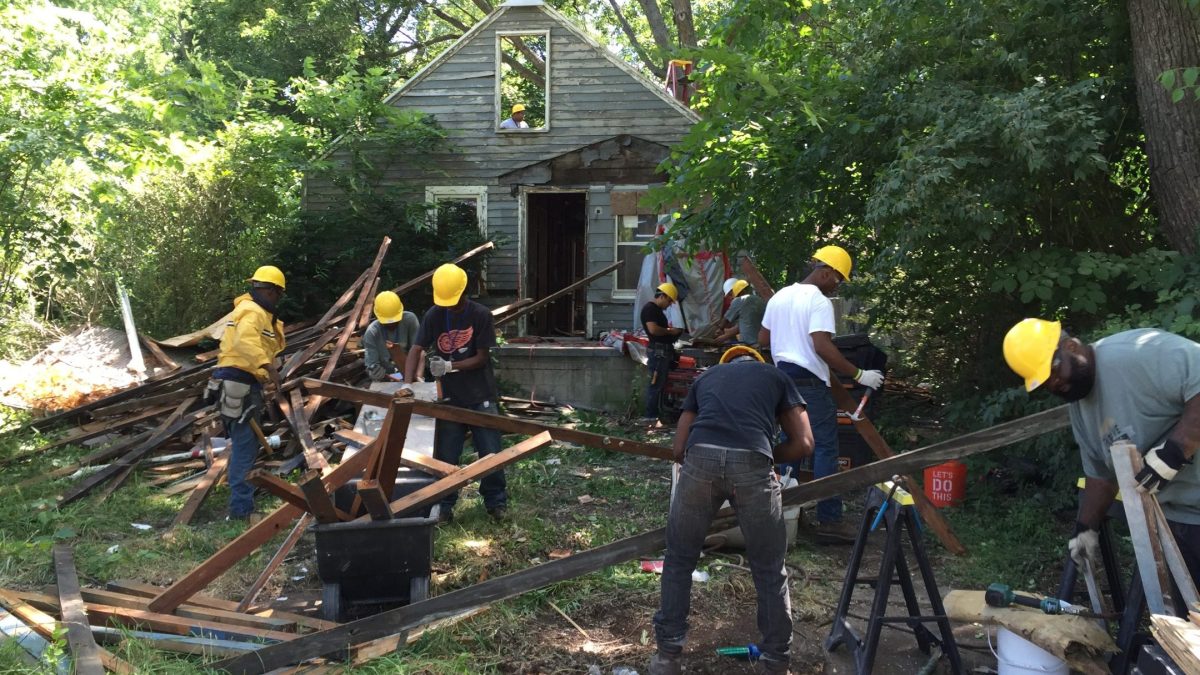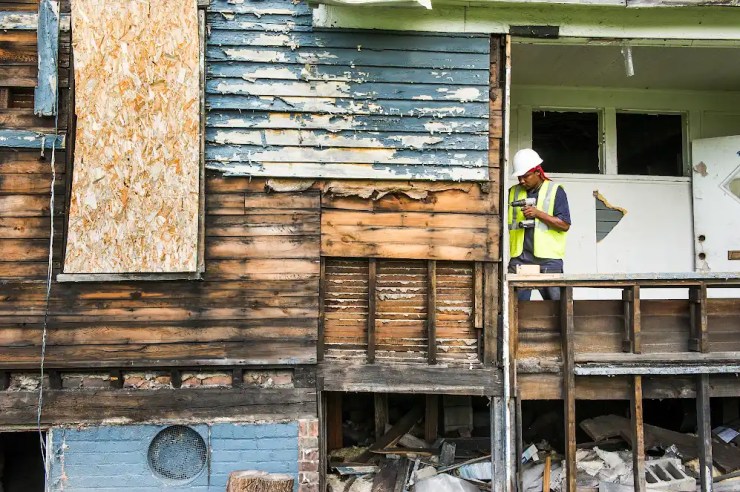Jobs
Detroit deconstruction company supports jobs and sustainability – Marketplace

More often than not, a building’s life cycle follows a take-make-waste approach. Extracted natural resources manufactured for construction materials frequently end up as waste that winds up in landfills. According to recent literature from the science journal Materials, the construction industry is responsible for 30% of the total waste produced globally. As a result, the linear model poses as a growing threat to the environment.
But some people in the construction industry are taking a more sustainable approach. Those in the deconstruction business work to divert as much of the raw materials from landfills and circulate them back into the local economy. It is a green alternative to traditional demolition which prioritizes clearing a site as quickly as possible. Instead of bulldozers and excavators, it’s a hand-by-hand and often piece-by-piece process.
The sector now employs around 14,500 people and saves about 350,000 tons of waste from landfills each year. A growing number of cities across the country are adopting deconstruction practices like San Jose, Palo Alto, Baltimore, Cleveland and Boise. Included on the list is Detroit, a city with a high volume of abandoned homes and dilapidated structures.
“Marketplace Morning Report” host David Brancaccio spoke with Chris Rutherford, executive director of Architectural Salvage Warehouse of Detroit, as part of our ongoing “Economic Pulse” series. The non-profit and resale organization deconstructs buildings in Southeast Michigan and makes housing materials available to the community at a lower cost.
The following is an edited transcript of their conversation.
David Brancaccio: We get numbers all the time from the government on the construction industry. I think you’re in the deconstruction business?
Chris Rutherford: That’s right. It’s very similar except it’s in the reverse order. Instead of building a structure, we take it apart piece by piece. Construction and demolition debris is one of the largest contributors to landfills in the world, and so [we] try to save and salvage every aspect that we can and transform waste into opportunities.
Brancaccio: We used a salvage sink when fixing up a kitchen once. Are you seeing people interested in the used stuff with character?
Rutherford: In Detroit, there are a lot of abandoned and blighted properties. A lot of them have to come down. But you’ve got a variety of different outlets for the materials.
So you’ve got the consumers who are looking at a low cost way to say upgrade their kitchen, or you’ve got a historic preservationist looking for some specific trim. You’ve got a number of businesses that we’ve helped incubate that use reclaimed materials. And so when you go into these old Detroit homes, what’s really left is the beautiful old lumber that these homes were built with. You can make all sorts of wonderful things out of them and create jobs in Detroit and around the region.
Brancaccio: That’s an especially interesting part of the work that you do, right? You see that work as an engine for the local economy?

Rutherford: Absolutely. So when you look at deconstruction, you are creating eight to 10 jobs over standard demolition. And then when you look at the downstream economic benefits of deconstruction, reuse of those materials in the local economy, you’re talking about 20-to-one in jobs.
Brancaccio: Government numbers show the labor market in America still running strong, 8.8 million job openings were posted this winter. It’s sometimes hard to find construction workers; what about finding deconstruction workers — getting tougher to hire?
Rutherford: It is, yeah. I think that while the demand is growing, our capacity to take more down is getting more challenging. But it’s a great pathway into the construction field. A lot of our program participants move on to various construction trades, including unions and truck driving and CNC operators (computer numerical control). But right now, yes. I think the market is pretty tight, so it makes it difficult to compete.
Brancaccio: So there’s an upside here if you can get the word out.
Rutherford: In Detroit and all around the country, it’s a huge benefit economically, environmentally, socially. Preserving those materials and telling the story of them is a big important part of it.
There’s a lot happening in the world. Through it all, Marketplace is here for you.
You rely on Marketplace to break down the world’s events and tell you how it affects you in a fact-based, approachable way. We rely on your financial support to keep making that possible.
Your donation today powers the independent journalism that you rely on. For just $5/month, you can help sustain Marketplace so we can keep reporting on the things that matter to you.








